Thuja western "Holmstrup": description, rules of planting and care

Western thuja "Holmstrup" is an elegant evergreen shrub that is widely used in landscape design and urban gardening. The popularity of this plant is due not only to its charming appearance, but also to its unpretentiousness, high frost resistance and durability. What other features are characteristic of the thuja of this variety? What should be considered when growing this ornamental shrub? Answers to these and other questions are given in this article.
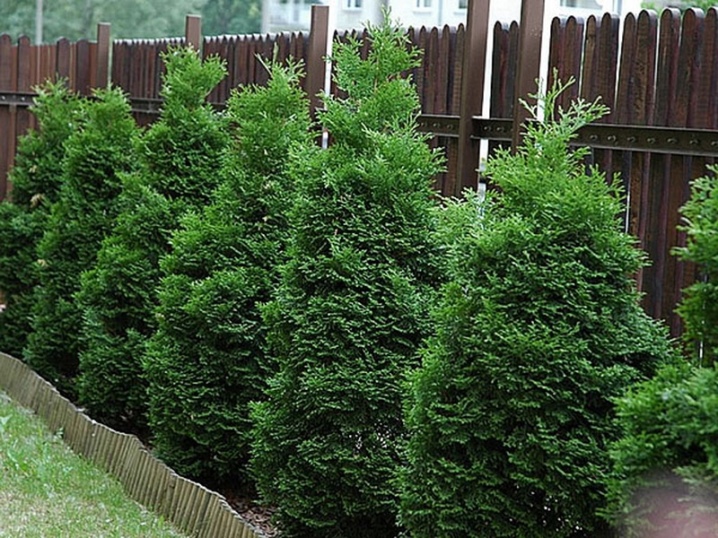
Description
Western thuja varieties "Holmstrup" is considered one of the most common dwarf plant hybrids of this genus. The shrub belongs to the group of dwarf hybrids, since its annual growth is no more than 15 centimeters. Thus, for a plant to be able to reach one and a half meters in height, it will take about 10 years. The low growth rate is not the only specific feature of the “Holmstrup” variety thuja. This perennial is prized by gardeners and landscape designers for characteristics such as:
- resistance to drought and low temperatures;
- disease resistance;
- shade tolerance;
- no need for formative pruning;
- the ability to take root in adverse environmental conditions.
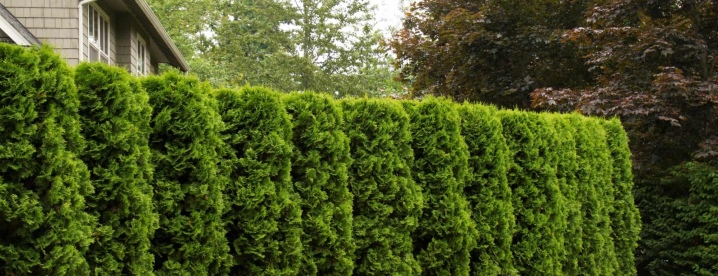
Thuja "Holmstrup" is a decorative perennial with a regular conical crown, strongly branching shoots covered with scaly, but not prickly needles. The height of an adult plant reaches 3 meters or more, the crown diameter rarely exceeds 1.3 meters. The plant does not lose its decorative effect even in the absence of formative pruning. The attractive emerald green color of the needles remains in this perennial in winter.
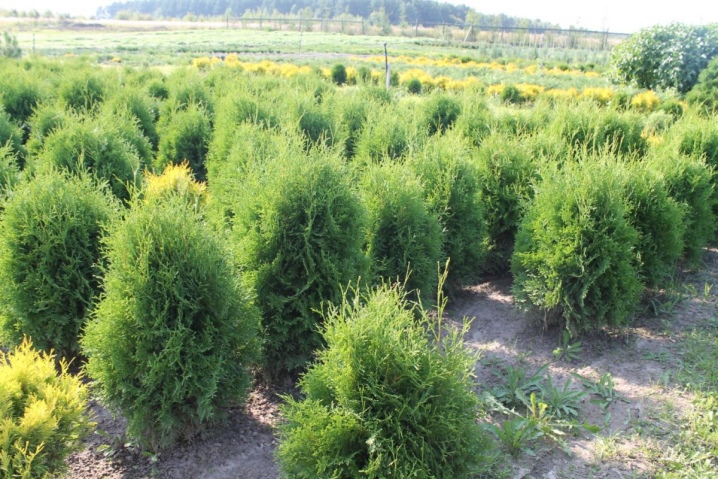
The bark is smooth, dark brown. Cones are small, scaly, egg-shaped. The root system of the thuja of the specified variety is compact, located close to the surface of the earth. It is noteworthy that tuye "Holmstrup" for full development and growth does not require large areas... It takes up a minimum of free space on the site, does not interfere with the development and growth of other green inhabitants of the garden.
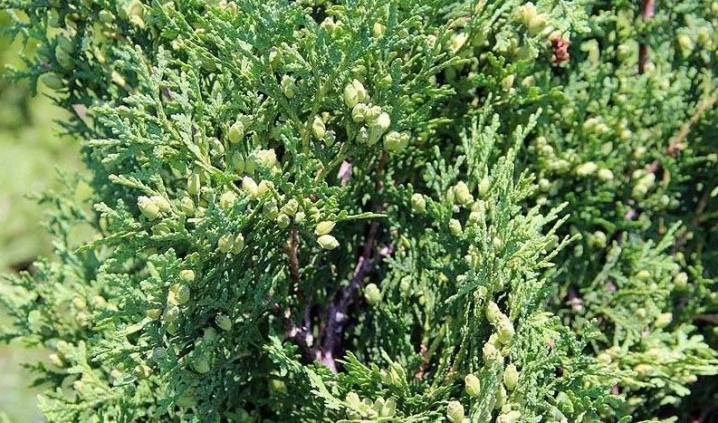
Thuja planting helps to purify and improve air quality. The aboveground part of these plants releases phytoncides into the atmosphere - active volatile substances that destroy pathogenic microbes and suppress their development.
Landing
When planning to grow the western thuja "Holmstrup" on your site, it is important to find a suitable place for it. Despite the fact that this perennial firmly tolerates light shading, it is recommended to allocate the most illuminated corners of the garden for it. The lack of light negatively affects the decorative qualities of the plant. When grown in the shade, its crown begins to thin and stretch, and the emerald needles become pale.
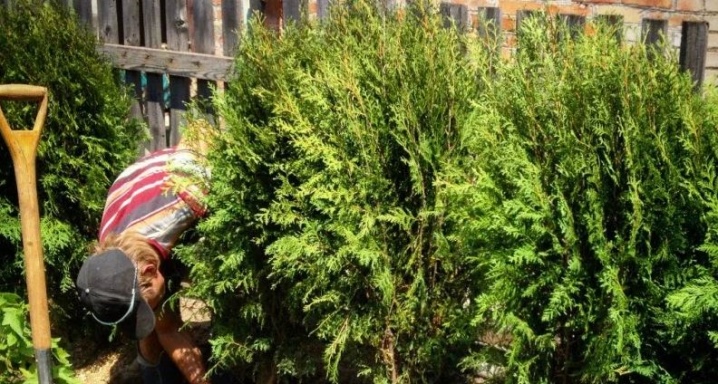
A well-lit corner, protected from cold winds and drafts, is best suited for growing western thuja varieties "Holmstrup". In extreme cases, you can give preference to places that are in light partial shade. This perennial will feel most comfortable on fertile loose soils. The moisture and air permeability of the soil also play an important role.When growing western thuja in heavy soils, in which water often stagnates for a long time, the plants often develop root system diseases. A drainage layer, which is laid at the bottom of the planting pit, allows to avoid stagnation of moisture and, as a result, decay of the roots. It is recommended to use crushed stone, pebbles, pieces of brick as drainage.
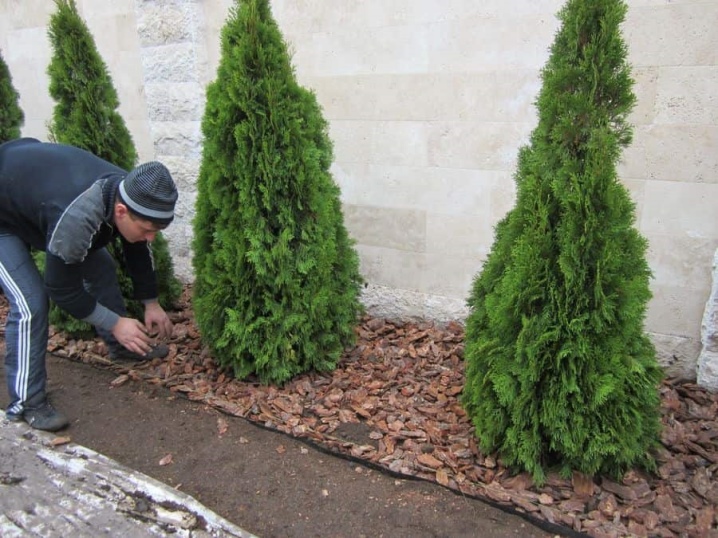
The dimensions of the planting pit are calculated so that they exceed the size of the container with the plant by 10-15 centimeters. The standard parameters are 60x60x80 centimeters.
After preparing the pit, drainage is laid on its bottom, on top of which a previously prepared soil mixture is poured. It can be prepared from garden soil, peat and sand, taken in proportions of 2: 1: 1, respectively. After filling with the soil mixture, the pit is thoroughly spilled with water. When the moisture is completely absorbed, the thuja is carefully removed from the container along with a clod of earth on the roots. Next, the seedling is placed in a pit without deepening the root collar, and watering is carried out again, making sure that the water moistens the clod of earth. Then the ground around the plant is carefully compacted, fixing it in a stable upright position. At the end of the work, the surface of the earth around the trunk is sprinkled with mulch.
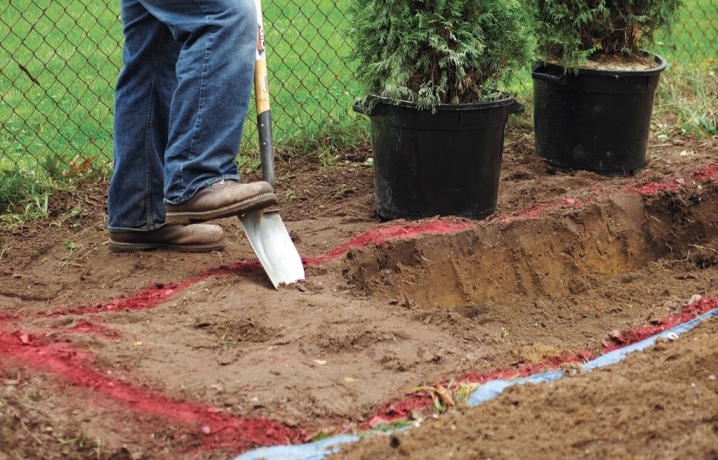
Before buying seedlings of western thuja "Holmstrup", it is important to pay attention to the quality of the planting material. The safest way to buy plants is from trusted locations - reputable nurseries and garden shops. When examining a seedling, it is recommended to assess the condition of the roots, branches, shoots and needles. The roots of healthy plants are elastic and strong, without signs of mechanical damage and traces of pest damage. Shoots and branches should be firm, upward. The needles of healthy plants are emerald green, juicy, not crumbling when touched.

Another important point to pay attention to when buying is the price of seedlings. These decorative perennials cannot be suspiciously cheap, so the low price should alert the buyer.
Correct care
Despite the fact that thuja "Holmstrup" is considered an unpretentious plant, it still needs proper care. Not only external attractiveness depends on this condition, but also the health of the perennial itself, its resistance to diseases and pests. A set of measures for the care of a thuja of the specified variety includes the following points:
- watering;
- top dressing;
- loosening the earth and weeding;
- pruning;
- preparation for winter.

Watering
Western thujas are able to withstand temporary drought, however, it is strongly not recommended to neglect their timely watering. A constant moisture deficit negatively affects the decorativeness of plants and often becomes the cause of their death. The recommended frequency of watering is 1-2 procedures per week. 10 liters of water is enough for one plant. In dry weather, it is advisable not only to water the plants more often, but also to spray their crowns with water from a spray bottle. In this case, it is important to ensure that the conifers are protected from the scorching sun.
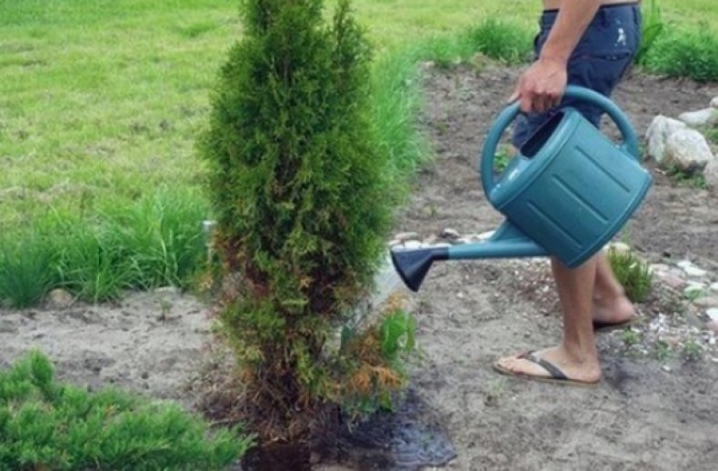
After watering, the trunk circle should be mulched. This will avoid rapid evaporation of moisture.
Top dressing
If, during planting, complex fertilizers were introduced into the soil mixture, then it is not recommended to feed the thuja for 1-2 years. Already established conifers, from the moment of planting of which 1-2 years have passed, are fed twice a year - in spring and autumn. For top dressing, it is advisable to use special fertilizers for conifers. Top dressings from such well-known brands as Bona Forte, Agricola, GreenWorld, Fertika have proven themselves well. It is strongly discouraged to overuse fertilizers containing nitrogen. With an excess of this substance in the soil, thuja begin to lose their decorative effect, and their crown becomes "disheveled" and untidy.
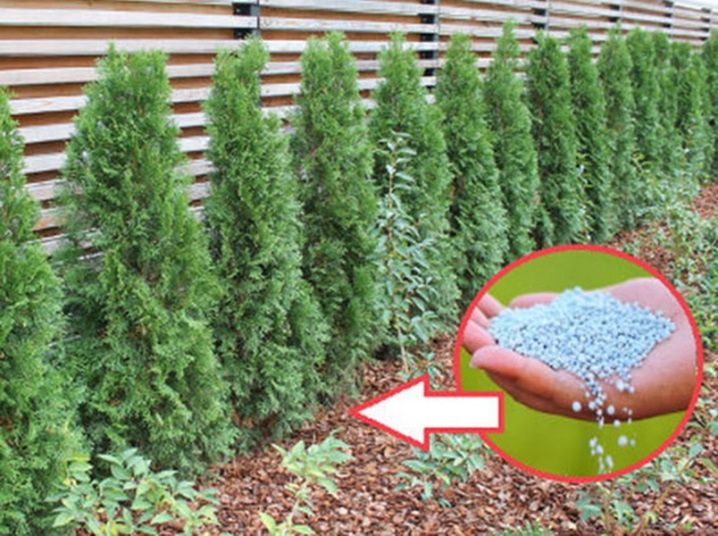
Loosening and weeding
Western thuja "Holmstrup" prefers light and well-drained soils. Periodic loosening of the soil in the near-trunk circle will provide oxygen access to the plant roots, and subsequent mulching will help maintain an optimal moisture level. It is important to consider that the root system of these conifers is superficial. For this reason, loosen the soil in the near-trunk circle to a shallow depth (no more than 10 centimeters), observing the utmost care. It is necessary to pay attention to the timely removal of weeds that can suppress the normal growth and development of conifers. In addition, many weeds are often hiding places for pests.
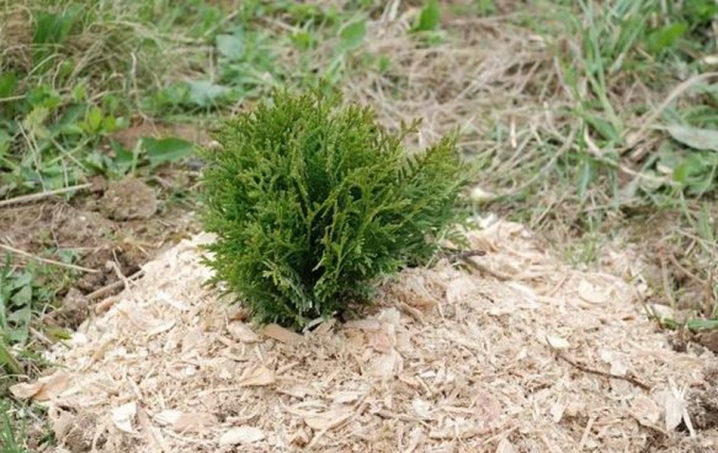
Formative and sanitary pruning
Western thuja "Holmstrup" is able to independently maintain an attractive pyramidal and columnar shape, without requiring pruning. In most cases, gardeners carry out this procedure when they want to give shrubs a more original appearance. Usually, formative pruning is carried out no more than 1 time in 2 years. To maintain a neat appearance, plants require periodic sanitary pruning, during which old and diseased shoots are removed from the conifers. Damaged branches affected by wind or snowfall are also subject to removal.
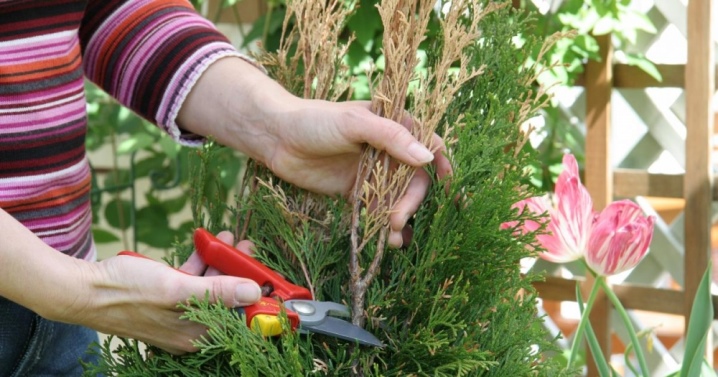
Preparing for winter
Experienced gardeners claim that the western thuja of the "Holmstrup" variety is able to withstand a significant drop in air temperature - up to -30 °. However, in order for the plant to be able to endure the winter more easily, preparatory measures will be required in advance. Winter frosts can pose a threat to the root system of these conifers, which is located close to the surface of the earth. So that the roots of plants do not suffer from the cold, the near-stem circle shortly before the cold weather is mulched with fallen leaves, sawdust. Additionally, on top of the mulch layer, the burlap is pulled and fixed.
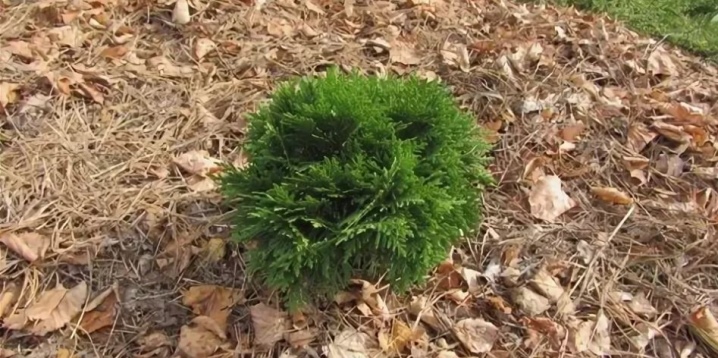
So that the crown of the thuja does not suffer during heavy snowfalls, it is tightened around the circumference, wrapped with a wide ribbon or ordinary rope several times. Some gardeners limit themselves to covering bushes with burlap. In the spring, choosing a cool and cloudy day, the shelters are removed.
Reproduction
Propagated by western thuja seeds and green cuttings. Seeds are sent for stratification before spring sowing. In the spring, planting material is sown on the beds, slightly embedding them in the ground. It should be noted that gardeners rarely resort to the seed method of reproduction of thujas, since in this case there is a risk of loss of varietal characteristics of the plant. Cuttings are the easiest and most affordable way to breed these evergreen conifers. Cuttings are harvested in the spring before the onset of sap flow and in the fall before the onset of cold weather.

In the course of harvesting, the strongest and healthiest side shoots are cut off with a sharp knife. Then the planting material is kept for several hours in a solution of a root formation stimulator. The cuttings are planted in trays with a soil mixture consisting of turf, peat and sand, taken in equal proportions. After planting, an impromptu greenhouse from a plastic bottle or food container is arranged over the cuttings.

Diseases and pests
Western thuja varieties "Holmstrup" are characterized by resistance to pests and pathogens. Most often, these problems are faced by inexperienced gardeners who neglect proper plant care. So, a violation of the irrigation regime often causes the development of fungal diseases of the root system of shrubs. For treatment, fungicidal and medicinal preparations are used. Often, thuja are exposed to an invasion of a dangerous pest - a false scale insect parasitizing in the scaly needles of plants. Signs of the defeat of the thuja by the scabbard are yellowing and falling of the needles.To exterminate this parasite, insecticides are used, with which shrubs are treated once every 10 days for a month.
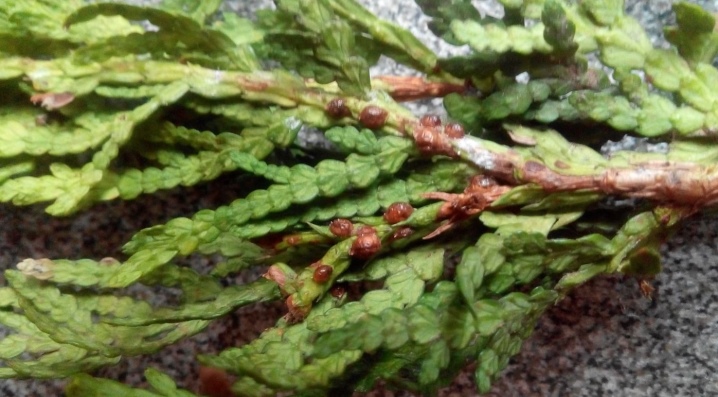
Another pest that poses a threat to Western thujas is the spider mite. Its parasitic activity is evidenced by the yellowing and falling of the needles of plants, as well as the presence of clusters of thin and rare cobwebs on the shoots. Treatment consists in treating conifers with acaricidal preparations.
Use in landscape design
Tui "Holmstrup" are used to create evergreen hedges, to delimit the site into functional zones. They look attractive both in single and in group, combined landings. These graceful conifers are widely used in topiary art. They are actively used as background plants in the arrangement of flower beds, mixborders, flower beds. Dwarf thuja are also used in the creation of rocky gardens (rockeries), as well as in the arrangement of gardens in eco-style.
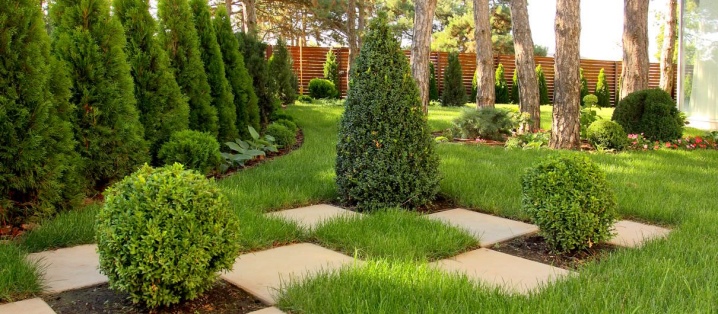
Thuja "Holmstrup" are also used in container gardening. By growing these short shrubs in beautiful pots and flowerpots, you can easily experiment with the look of your garden, moving the plants from one place to another if necessary.
For information on how to properly plant the thuja western "Holmstrup", see the next video.



































































The comment was sent successfully.